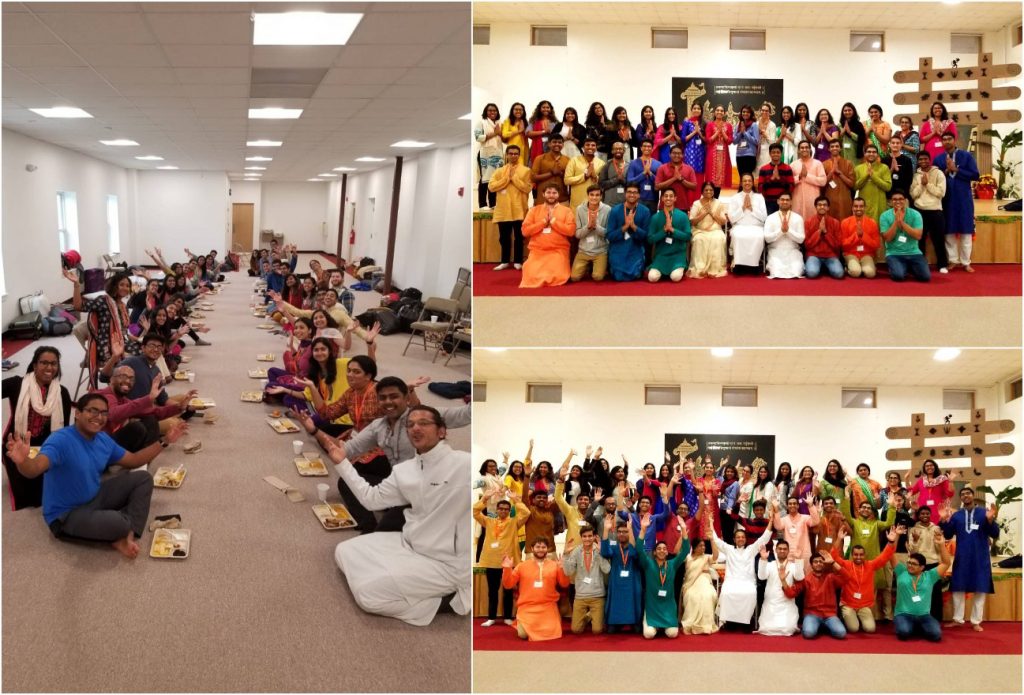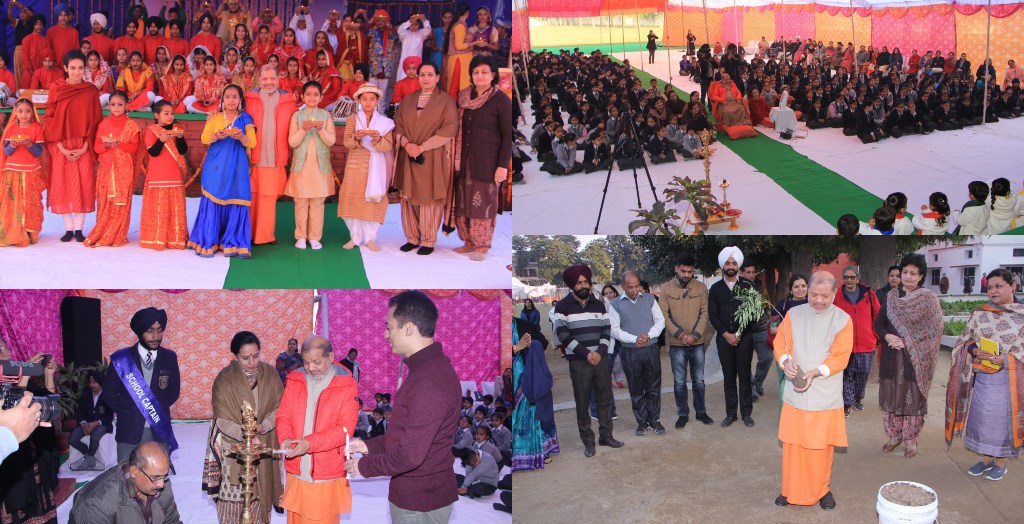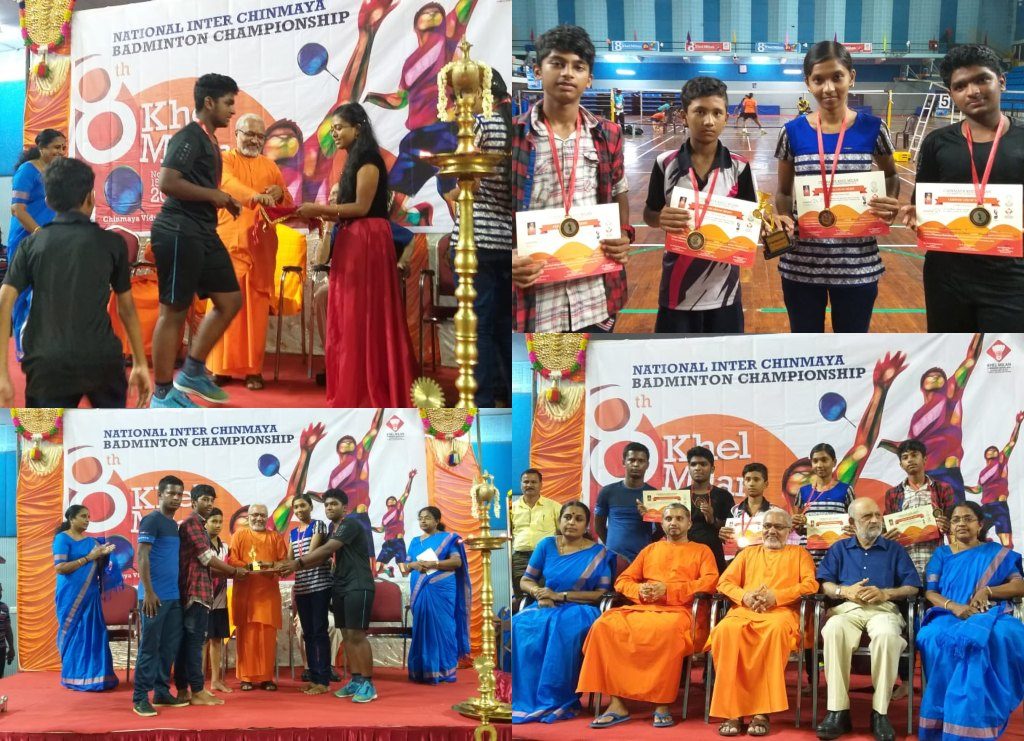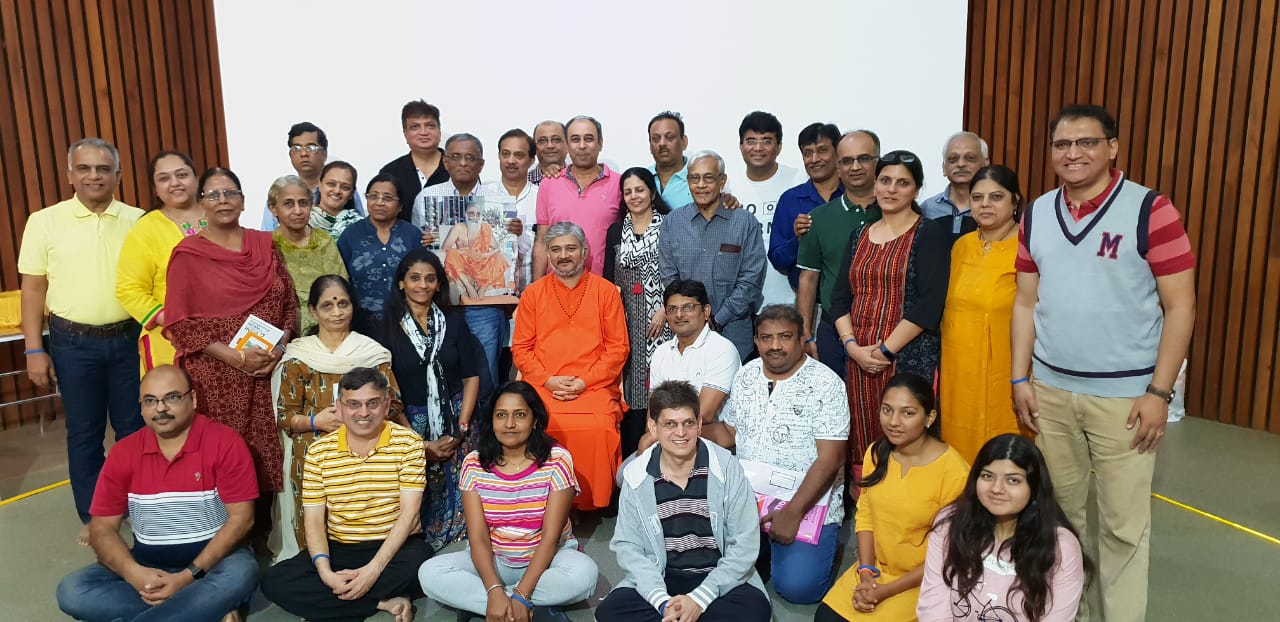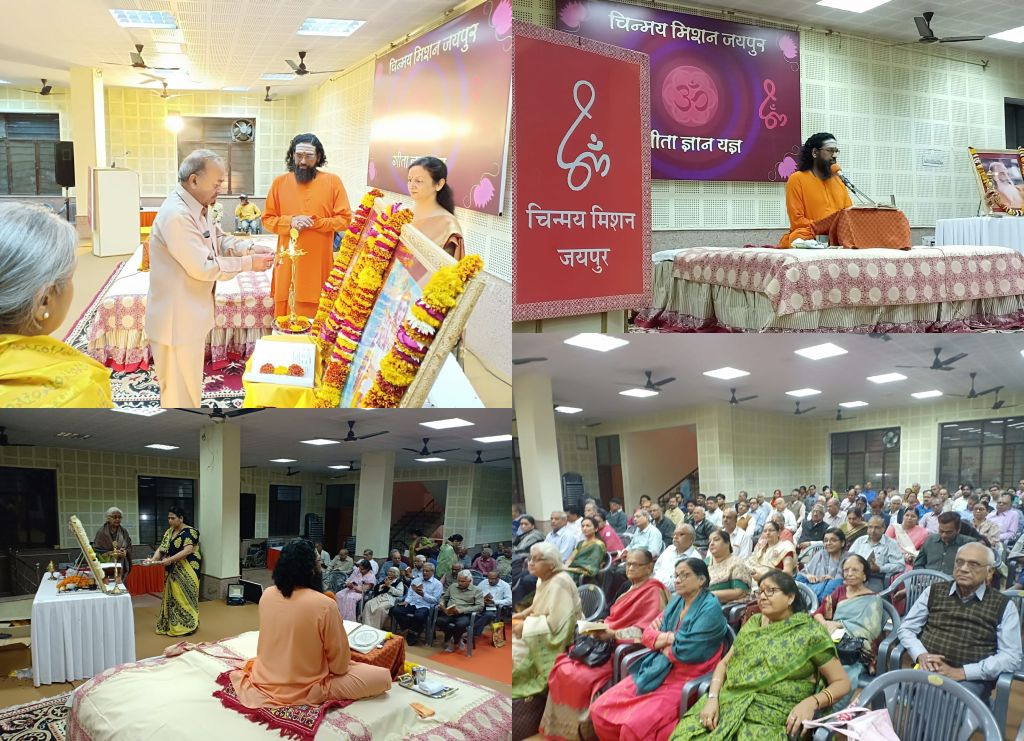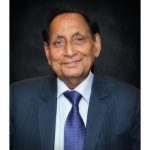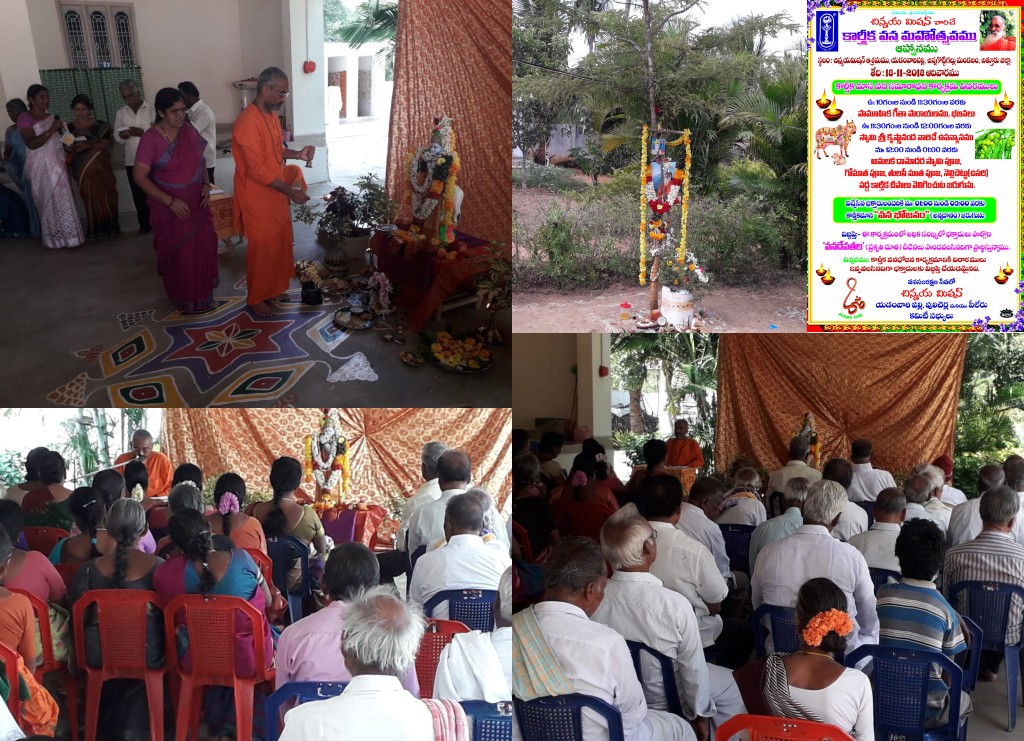On Nov. 24, Shri Venkaiah Naidu, Vice President of India, conferred the Dr. Nagendra Singh International Peace Award to Chinmaya Mission for its yeoman’s services to the nation since its establishment in 1953.
The special event, hosted by Rastra Nirmaan and the International Goodwill Society of India (IGSI) at Vigyan Bhawan, New Delhi, was attended by nearly 2,000 people. It reflected the deep respect and appreciation of the Indian people for the noble work started by Pujya Gurudev Swami Chinmayananda.
Speakers on the occasion included Dr. Yogendra Narain, National President IGSI, who applauded the achievements of Chinmaya Mission, and Shri Alok Kumar, Working President, Vishva Hindu Parishad, who fondly recalled his time with Pujya Gurudev.
The keynote speech was delivered by the Vice President who stated that Swami Chinmayananda Saraswatiji was very particular about punctuality of time and about upholding India’s glorious traditions. He pointed out that Chinmaya Mission was a unique and significant institution. The important thing was not to bestow an award on a great saint like Swami Chinmayananda, but to follow his teachings. He commended the motto of Mission and stressed that it had rendered service in the fields of spiritual enlightenment, education, environment, culture, rural development and youth empowerment, both in India and abroad. He applauded the Mission for being “a great ambassador of Indian ethos and values”, and “a true embodiment of the virtuousness and the spirit of peace and humanism that Hinduism stands for.” He concluded by requesting the audience to take inspiration from the work of this great saint and support and promote the Mission’s activities.
Swami Prakarshananda, accepting the award on behalf of Chinmaya Mission, warmly thanked the Vice President and the institutions for choosing the Mission for this year’s award. He recalled the Mission pledge, and underlined the immense contribution of the leadership, of all acharyas and devoted members of the Mission. Swamiji pointed out that the knowledge of Vedanta alone could bring about universal love and peace. He dedicated the award at the lotus feet of Pujya Gurudev and concluded with the all-inclusive prayer, sarve bhavantu sukhinah …
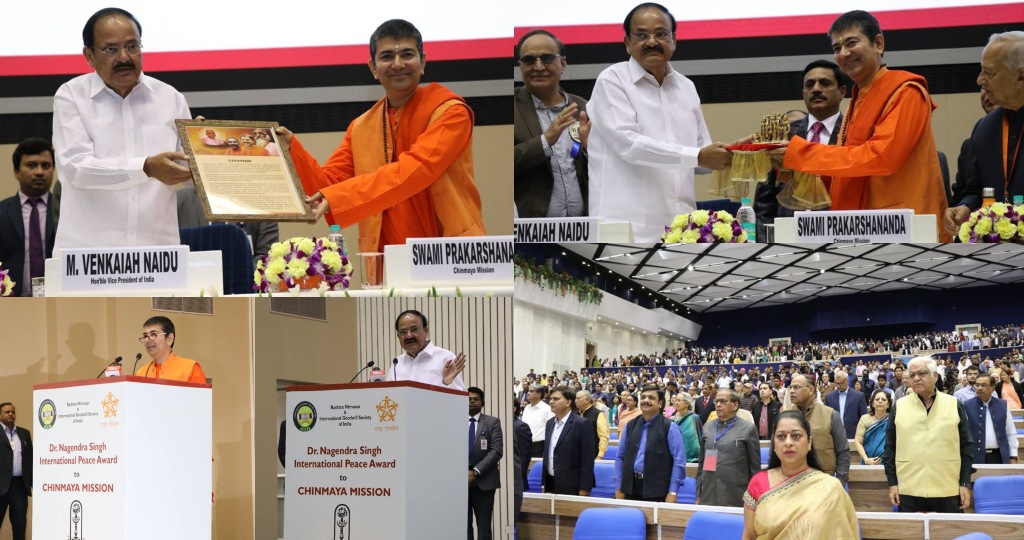
The following is the full text of the speech of the Hon’ble Vice President of India.
I am extremely happy to be present today on the auspicious occasion of the presentation of the Dr Nagendra Singh international Peace Award to the Chinmaya mission.
Justice Nagendra Singh was the only Indian who secured full tenure at the International Court of Justice in the Hague. Early in 1973 he became a Judge of the International Court of Justice, thereafter its Vice President, and subsequently he was elected the President of the International Court in 1985.
He served in the ICJ for more than 11 years and brought laurels to our nation. He was not only a distinguished civil servant but also a great jurist whose knowledge of international law was both profound and deep.
I am told that the international Goodwill Society of India (IGSI), a non-political, social and scholastic association, which is presenting this prestigious Peace Award, was founded by Justice Nagendra Singh in 1982.
The objective behind its formation was the mobilization of the society to oppose challenges of human rights violation, hatred, violence, arms race and exploitation.
This, he felt, was possible only by consciously promoting a feeling of brotherhood amongst men and creating goodwill through the practice of right conduct and the nurturing of a positive attitude.
The Society has earlier conferred these Peace awards on Justice Dalveer Bhandari of the international Court of Justice and on Shri. Ravi Shankar of the Art of Living fame. This year it is being given to the Chinmaya Mission.
I must compliment the Society and its members for choosing individuals and institutions who are promoting peace and goodwill through both their philosophy and their actions.
World peace has been humanity’s long standing dream. Since time immemorial, poets have sung about it, philosophers have tried to comprehend its complexities and rulers and governments have tried to find ways to achieve it.
Yet, even at the threshold of the 21st century, world peace continues to elude us, it remains an unfulfilled quest, an unreachable destination.
The achievement of world peace is undoubtedly a slow and painful process.
We can take heart from the fact that we have travelled a long way since the barbaric days of the World War, the holocaust and the tragic times of Hiroshima and Nagasaki.
In 1945, after the world was forced to bear witness to the unimaginable horrors of the Second World War, humanity came together and promised themselves that there wouldn’t be a Third World War to lament over. The historic 51 member League of Nations was thus born and later, transformed into the 192 member United Nations Organization.
The countries of the world came to a consensus that the only way to achieve peace was to work together and help each other.
Nelson Mandela once said, “If you want to make peace with your enemy, you have to work with your enemy. Then he becomes your partner.”
India has been a beacon light of harmony and peaceful co-existence. For us, the whole world is one large family and the maxim of ‘Vasudhaiva Kutumbakam’ is firmly ingrained in our consciousness.
I am happy to learn that the Chinmaya Mission, the winner of today’s prestigious award was established in India in the early fifties by the devotees of the renowned Vedanta teacher and proponent of Adwaita, Swami Chinmayananda Saraswati.
Let me express my appreciation for the motto of the Mission which is ‘to give maximum happiness to the maximum number of people for the maximum time’. Its message is that of peace enabled by a deeper understanding of the self.
The Mission aims to bring about inner transformation of individuals through knowledge of Vedanta, spiritual practices and service to the society, thus creating a happy world around them.
It has been doing yeoman service in the fields of education, empowerment of youth, healthcare, rural development, environment and culture. The Chinmaya Mission is working to spread the message of spirituality, peace and service to all parts of the world. The mission is a great ambassador of Indian ethos and values.
It is a true embodiment of the virtuousness and the spirit of peace and humanism that Hinduism stands for.
The work done by Chinmaya Mission addresses the issues that lie at the heart of unrest and violence, the issues of deprivation, of injustice, of discontent. By educating the youth, it opens up a whole new world of opportunities to them. By focusing on conserving the environment, it paves the way for sustainable development.
Ultimately, if we want world peace, we must transform individuals.
If each of us can think and act differently by keeping the ultimate objective of improving the quality of life on this planet, the world will get transformed. Which is why, Gandhiji also had said, “Be the change you want to see in the world.”
Share and care has been the core of Indian philosophy. We need to internalize this spirit in whatever we do. Learning to live together is the essential element of Indian ethos.
This aspect of learning needs constant nurturing in our educational institutions.
I am glad that Chinmaya Mission is propagating these timeless ideas among the younger generation.
Violence has several facets, from physical to psychological, and from emotional to cultural. We must combat violence in all its forms and manifestations. We need a multi-pronged approach to bring in peace.
Unfortunately, very often, the mass media, our movies, our video games, our books, our television programs, the internet, portray violence and sometimes even glorify it. There is a need to exercise restraint in the portrayal of violence.
There are a number of other factors like isolationism, indoctrination, fundamentalism and violent extremism that are fuelling conflict and terror across the globe.
In fact, terrorism has become a major challenge to world peace today. The number of terror related incidents has been on the rise from around 650 in 1970 to nearly 13,000 in 2016. The fatalities in these incidents have risen from nearly 170 in 1970 to nearly 34000 in 2016.
We should aim at a more just and responsive world order and one that is based on multi-lateralism. We should foster a climate of mutual respect and resolve conflicts through dialogue.
Peace is a pre-requisite for progress. We cannot have adequate attention to development if there is tension. We must build an inclusive, harmonious world.
India’s message in this regard, taken from the Yajurveda, can prove to be highly inspirational.
“May there be Peace in Heaven and in the Sky,
May there be Peace on the Earth, in the Water and in the Plants,
May there be Peace in All,
May there be Peace within, giving me the Peace which Grows within Me.”
I once again congratulate the Chinmaya Mission for being awarded the Dr Nagendra Singh International Peace Award.
I hope it will continue to propagate the best thoughts from the ancient Indian texts that can pave the way for world peace.

